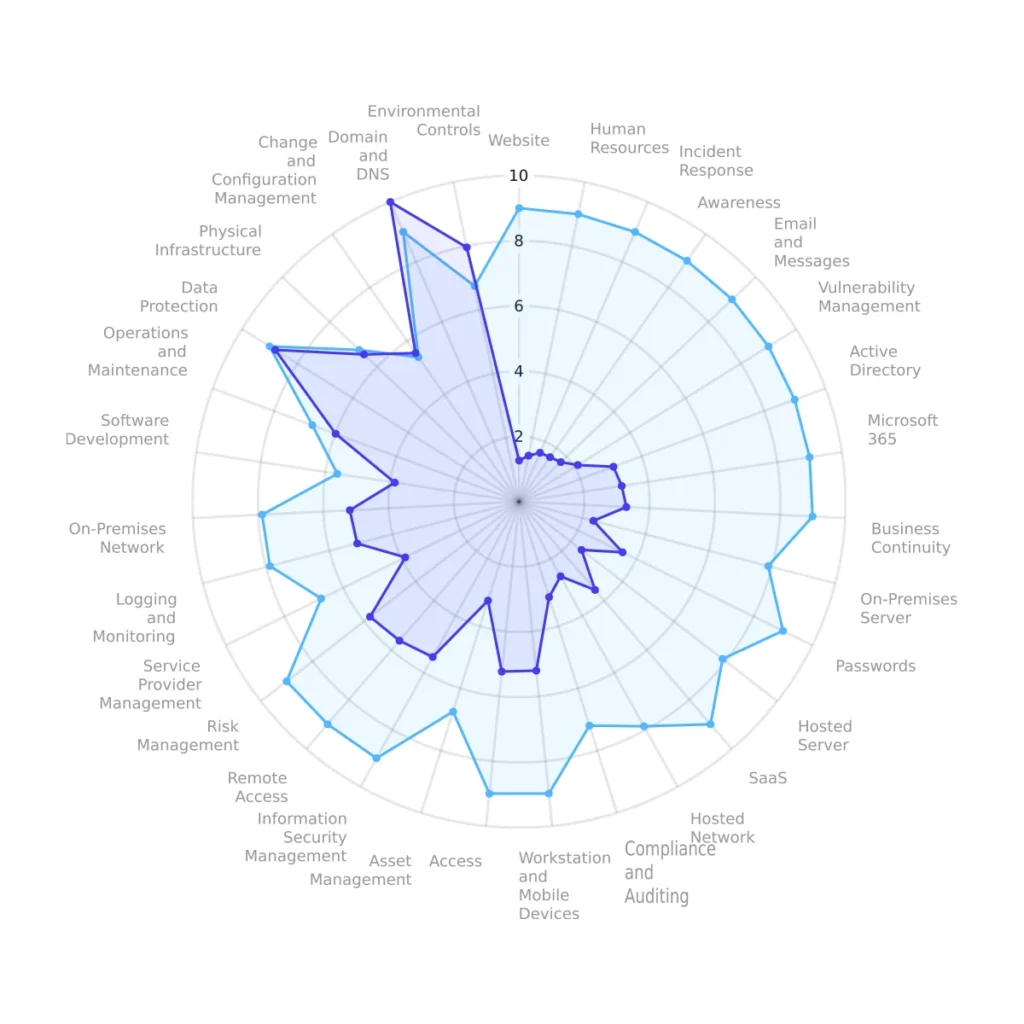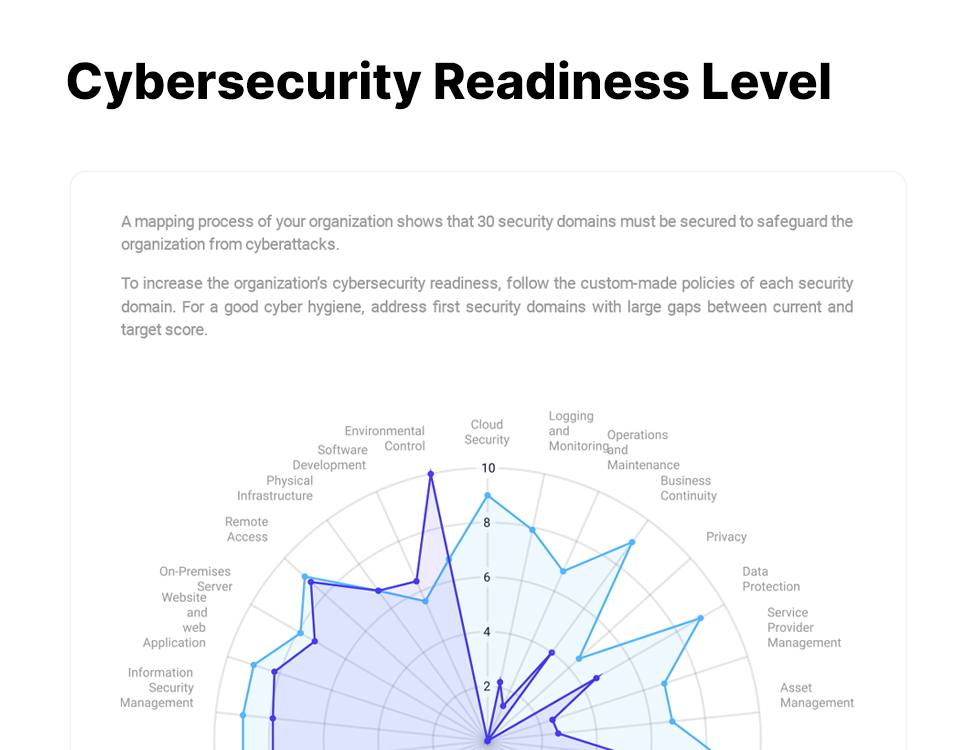The “Line of Negligence” in Cybersecurity: A Deep Dive by Cybersherpas vCISO Services
Cybersecurity has always been a blend of art and science. One of the primary tasks of any cybersecurity professional or team is evaluating the security posture of an organization. At CyberSherpas vCISO Services, we have taken this evaluation to a whole new level by introducing the concept of the “line of negligence” depicted on a spider chart. This approach allows businesses to visually understand their cybersecurity stance and plot an actionable roadmap.

What is the Spider Chart?
For those unfamiliar, a spider chart (or radar chart) is a graphical method of displaying multivariate data in the form of a two-dimensional chart of three or more quantitative variables. Each axis starts from the same point. In the context of cybersecurity, each axis can represent a different aspect of security, such as:
- User Education and Training
- Endpoint Protection
- Network Security
- Incident Response
- Data Protection
- Compliance and Governance
The closer the fill or line is to the outer edge of the spider web, the stronger an organization is in that specific aspect.

Introducing the “Line of Negligence”
While it’s beneficial to visualize an organization’s strengths and weaknesses, it’s critical to understand where the threshold of acceptable risk lies. The “line of negligence” is that threshold.
This line signifies the bare minimum standard that an organization should meet in each cybersecurity aspect. Falling below this line in any dimension indicates an area where the company might be considered negligent from a cybersecurity perspective.
Why is this concept important?
- Risk Management: Understanding where you fall short of the “line of negligence” allows you to prioritize your cybersecurity efforts, ensuring you address the most critical vulnerabilities first.
- Legal and Compliance: With the proliferation of data breach lawsuits and regulations like GDPR and CCPA, having a tangible benchmark can provide a framework for demonstrating due diligence in your cybersecurity efforts.
- Resource Allocation: In a world of limited resources, it’s crucial to know where investments will have the most impact. By identifying areas below the line of negligence, companies can channel their resources effectively.

Building a Cybersecurity Roadmap
After identifying areas that fall below the “line of negligence,” organizations can develop a phased roadmap to strengthen their security posture.
- Immediate Action Phase: Address areas below the line of negligence as they represent the highest risk. This might involve investing in new tools, training, or bringing in external expertise.
- Optimization Phase: For areas just above the line of negligence, focus on optimization and refining processes to ensure they remain robust.
- Innovation Phase: For those areas where the organization already excels, consider how you can push the envelope. This might mean looking into next-gen security technologies or advanced training.

Conclusion
Cybersecurity is not just about having the right tools in place but understanding your organization’s strengths and weaknesses. The “line of negligence” concept provides a clear, visual representation of where efforts should be channeled. At CyberSherpas vCISO Services, we’re committed to helping organizations navigate the intricate web of cybersecurity, ensuring that they remain resilient, compliant, and ahead of threats.
Interested in seeing where your organization stands? Get in touch with our experts today.

As CyberSherpas, we encourage all organizations to continue their journey toward stronger cybersecurity practices to safeguard their data and maintain the trust of their constituents. Let us be your cyber guide!!!